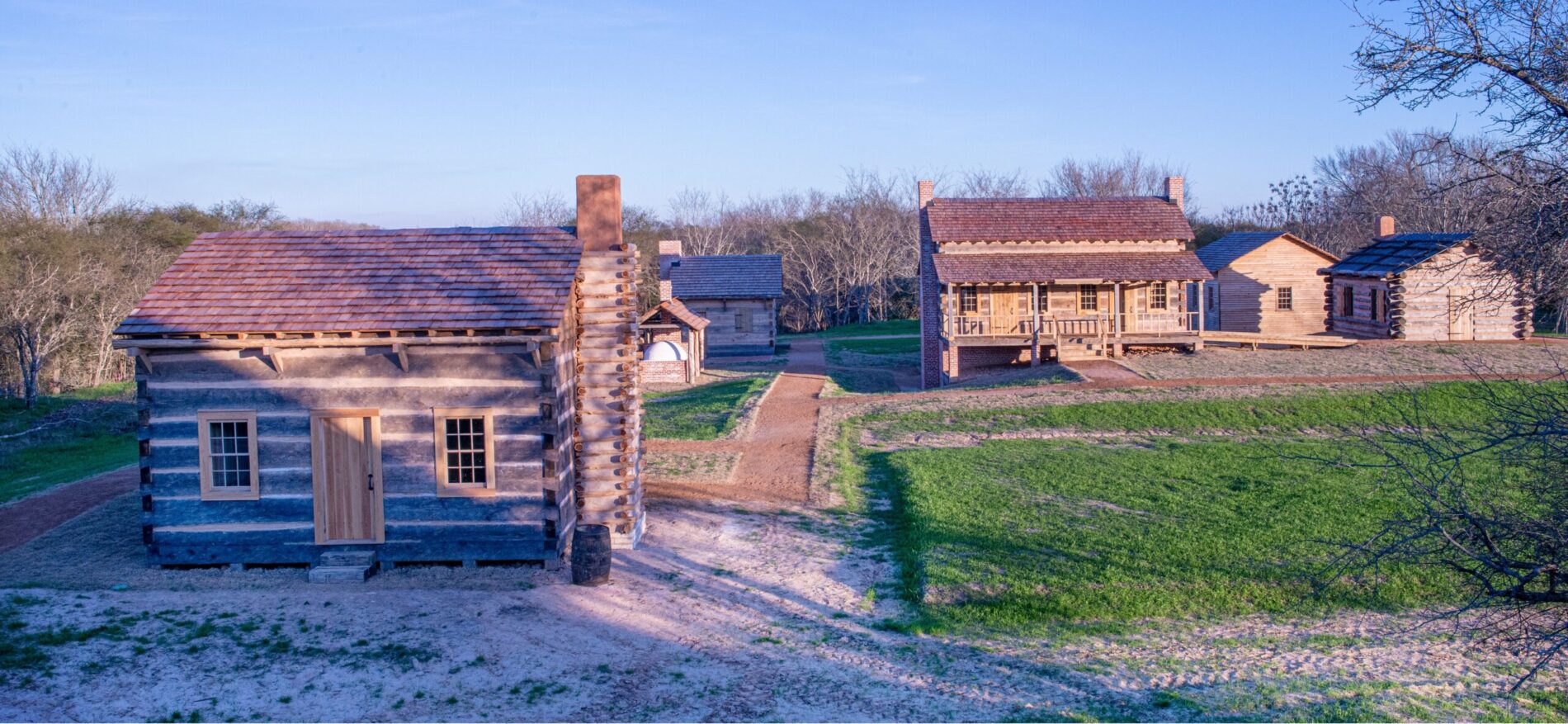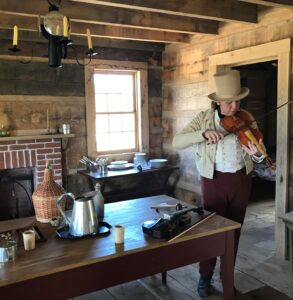
Villa de Austin opened at San Felipe de Austin State Historic Site in November. Courtesy Texas Historical Commission
Each day, thousands of motorists pass through the Southeast Texas town of Sealy on Interstate 10, many of them unaware they’re within a few miles of what was once the bustling town at the heart of Texas nearly two centuries ago.
From its founding by Stephen F. Austin in 1823 until it perished in flames in 1836, San Felipe de Austin never grew much larger than roughly 600 residents in primitive log and frame houses. But during its 13-year existence near the Brazos River, Austin’s namesake settlement was the political capital of colonial Texas, second in commerce and population only to San Antonio.
San Felipe de Austin State Historic Site preserves the old town site with a museum and visitor center. This November, the site expanded its interpretation of the historic town with the opening of Villa de Austin, a collection of eight log and frame structures that replicate one of old San Felipe’s busiest blocks.
Visitors can browse through the Farmer’s Hotel, a gathering place for the locals; try their hand at a reproduction of a 19th century printing press; or peer inside a schoolhouse where students sat side-by-side on plank benches as their teacher lectured from behind a log podium.

A reenactor plays fiddle at the Villa de Austin tavern. Courtesy Texas Historical Commission
Site Manager Bryan McAuley says the goal of Villa de Austin is to introduce visitors to the “touch and feel” of a largely forgotten community. “We’re truly trying to educate people,” McAuley said. “This is not a story that most people know.”
As part of the $2 million project, the wooden structures were built by craftsmen at their shops in Virginia, Pennsylvania, and Fort Worth, and then shipped to San Felipe for reassembly, McAuley said.
Despite its historic stature, San Felipe de Austin has been largely off the radar compared to famous sites such as the Alamo and San Jacinto. But it was in San Felipe that disgruntled settlers stoked the revolutionary fervor that led to the future state’s break from Mexico. When war broke out, citizens of San Felipe set the town ablaze to keep it from the Mexican army.
Nearly all of Texas’ most famous historical figures (Davey Crockett excluded) were in San Felipe de Austin at one time or another in the ramp-up to the Texas Revolution. Villa de Austin’s courthouse and government building replicate the site of colonial deliberations in 1832,1833, and 1835. A Mexican flag is affixed to a wall behind the podium.
Structures throughout the village invite visitors to participate in activities such as playing a game of backgammon at a table in the tavern or weighing nails at the store. Costumed interpreters enliven the exhibit on Saturdays as part of an evolving series of programs to recreate the colonial experience.
Operated by the Texas Historical Commission, the San Felipe de Austin State Historic Site—located about 2 miles north of I-10 on FM1458 (Exit 723)—covers nearly 100 acres and also includes a 16-foot-tall statue of Austin and a replica of his log cabin.
Plans for the latest developments began taking shape more than a decade ago as commission officials and area leaders sought to promote San Felipe de Austin to a broader audience. The commission authorized a two-phase project to construct the 10,000-square-feet museum, which opened in 2018, and the subsequent outdoor village. More than 1,100 visitors attended Villa de Austin’s opening premier in mid-November.








